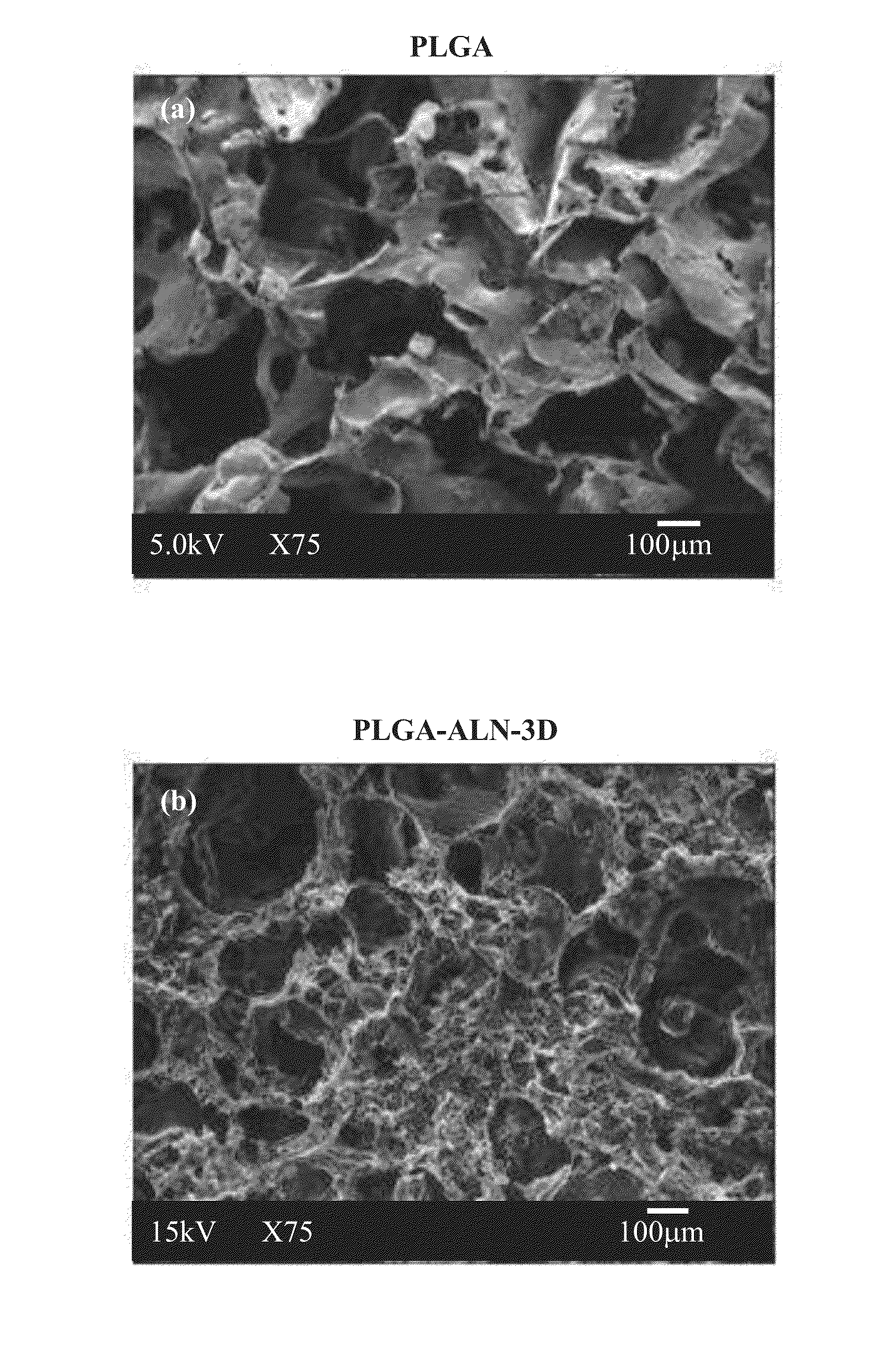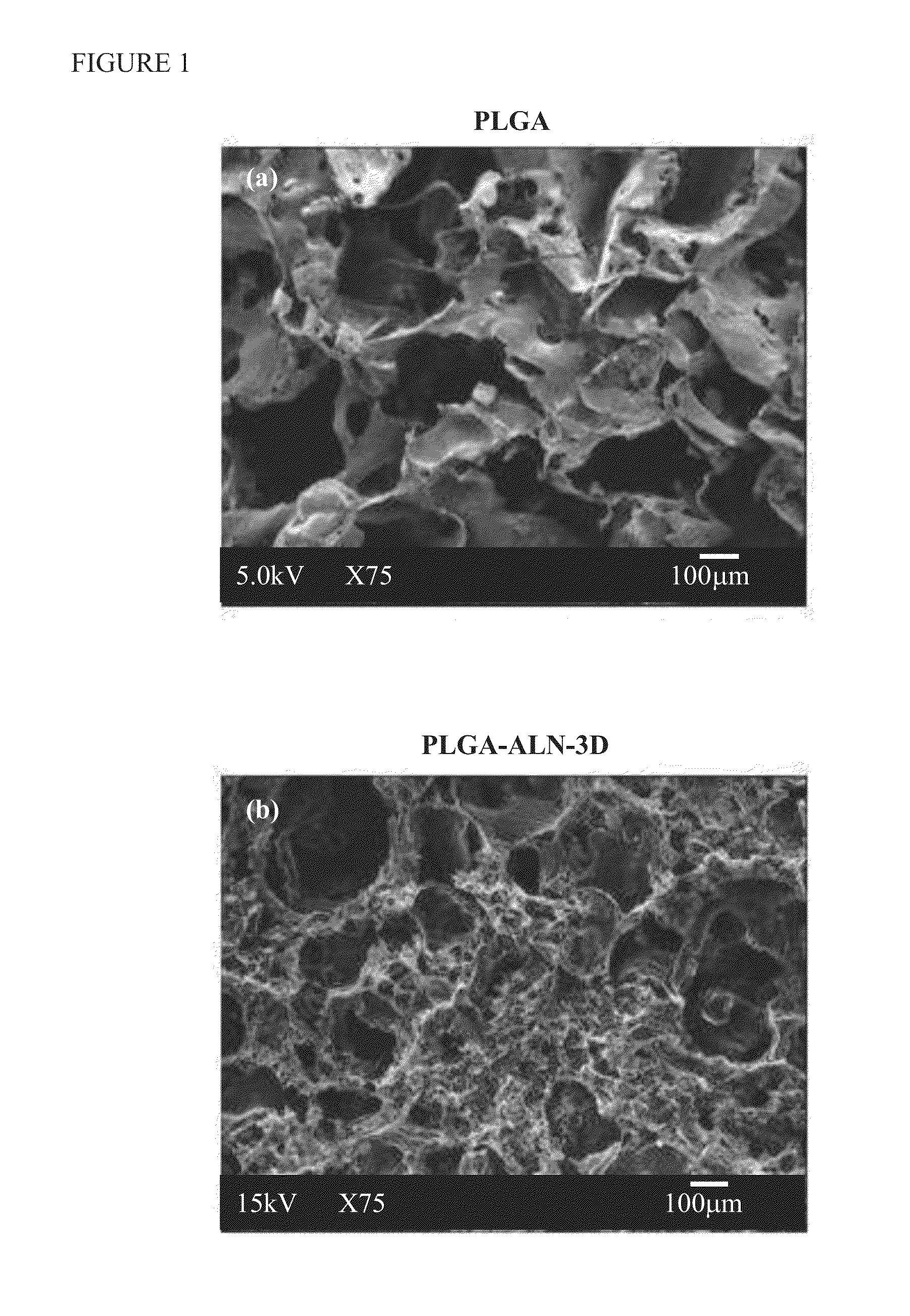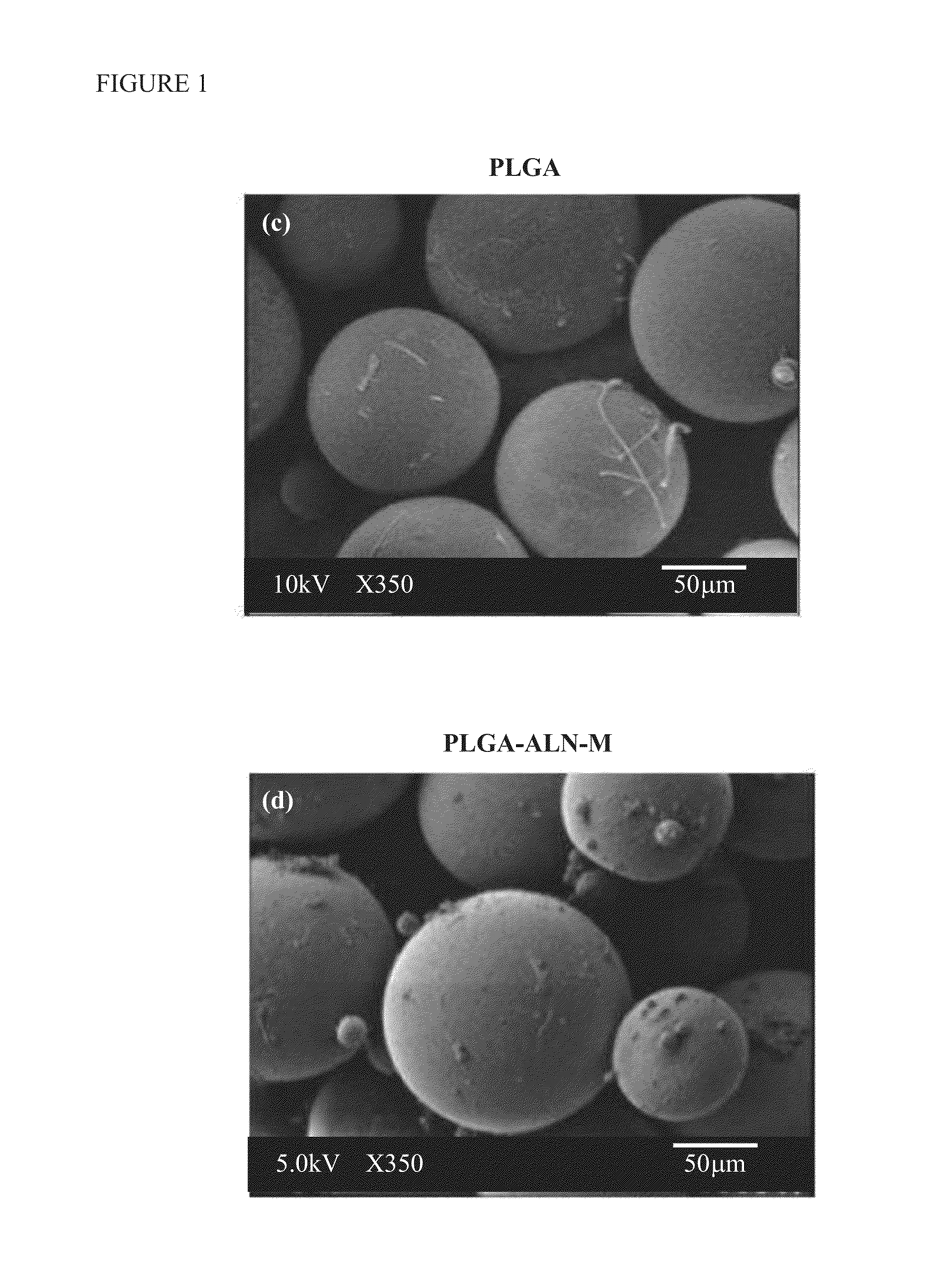Method for bone formation by administering poly(lactic-co-glycolic acid) cross-linked alendronate
a cross-linked alendronate and poly(lactic-co-glycolic acid) technology, applied in the direction of skeletal/connective tissue cells, prosthesis, transportation and packaging, etc., can solve the problems of inability to deliver, inconvenient use, and high cost of induction factors
- Summary
- Abstract
- Description
- Claims
- Application Information
AI Technical Summary
Benefits of technology
Problems solved by technology
Method used
Image
Examples
example 1
Isolation and Culture of hADSCs
[0062]After obtaining informed consent from all the patients and approval from the Kaohsiung Medical university hospital ethics committee, leftover subcutaneous adipose tissue was acquired from patients undergoing orthopedic surgery. The hADSCs were isolated from human subcutaneous adipose tissue following the previously described method (Fehrer and Lepperdinger, Exp Gerontol, 2005, 40:926-930). The isolated hADSCs were cultured and expanded at 37 C under 5% CO2 in K-NAC medium containing Keratinocyte-SFM (Gibco BRL, Rockville, Md.) supplemented with the EGF-BPE (Gibco BRL, Rockville, Md.), N-acetyl-L-cysteine, L-ascorbic acid 2-phosphate sequimagnesium salt (Sigma, St. Louis, Mo.) and 5% FBS (Fehrer and Lepperdinger, Exp Gerontol, 2005, 40:926-930).
example 2
Synthesis of PLGA Cross Linked Alendronate (PLGA-ALN)
[0063]The fabrication of PLGA-ALN is the two stage process, first the activation of the carboxylic acid end group of PLGA by EDC / NHS method and second is the cross linking reaction. Briefly, 1 g of PLGA (50 / 50) dissolved in 10 mL of dichloromethane was reacted with 3:2 ratio of NHS and EDC, stirred at room temperature for 12 h. Then, the insoluble dicyclohexylurea was removed by using a 0.45 μm Teflon filter. The activated PLGA polymer product was precipitated by excess diethyl ether, followed by dried under vacuum for 4 h. The PLGA-ALN was prepared by reacting equivalent mole ratio of EDC / NHS activated PLGA with sodium alendronate in dry dimethylsulphoxide stirred under room temperature for 12 h. The final product was precipitated and isolated by adding excess of cold diethyl ether followed by double distilled water. The isolated PLGA-ALN was dried under vacuum and stored at −20° C. till use.
example 3
Fabrication of Porous PLGA-ALN 3D Scaffolds (PLGA-ALN-3D)
[0064]The porous scaffolds for the PLGA-ALN were prepared by the salt leaching method. Briefly, 1:6 weight ratios of PLGA-ALN and combined with NaCl salt (particle size was 300-400 μm) was dissolved in 10 mL of chloroform under magnetic stirring. The gel-like precipitate was mixed completely with sieved salt particulates and was put into 2-mm thick, 5-mm in diameter disc-shaped Teflon molds, followed by a partial evaporation of chloroform at room temperature to obtain a semi-solidified mass. The molds were then immersed in a distilled water solution at room temperature, as well as salt leaching within the polymer / salt matrices. Then the porous polymeric scaffolds were taken out from the molds, washed with distilled water three times, and then dried under vacuum for 1 day.
PUM
| Property | Measurement | Unit |
|---|---|---|
| porosity | aaaaa | aaaaa |
| pores size | aaaaa | aaaaa |
| diameter | aaaaa | aaaaa |
Abstract
Description
Claims
Application Information
 Login to View More
Login to View More - R&D
- Intellectual Property
- Life Sciences
- Materials
- Tech Scout
- Unparalleled Data Quality
- Higher Quality Content
- 60% Fewer Hallucinations
Browse by: Latest US Patents, China's latest patents, Technical Efficacy Thesaurus, Application Domain, Technology Topic, Popular Technical Reports.
© 2025 PatSnap. All rights reserved.Legal|Privacy policy|Modern Slavery Act Transparency Statement|Sitemap|About US| Contact US: help@patsnap.com



